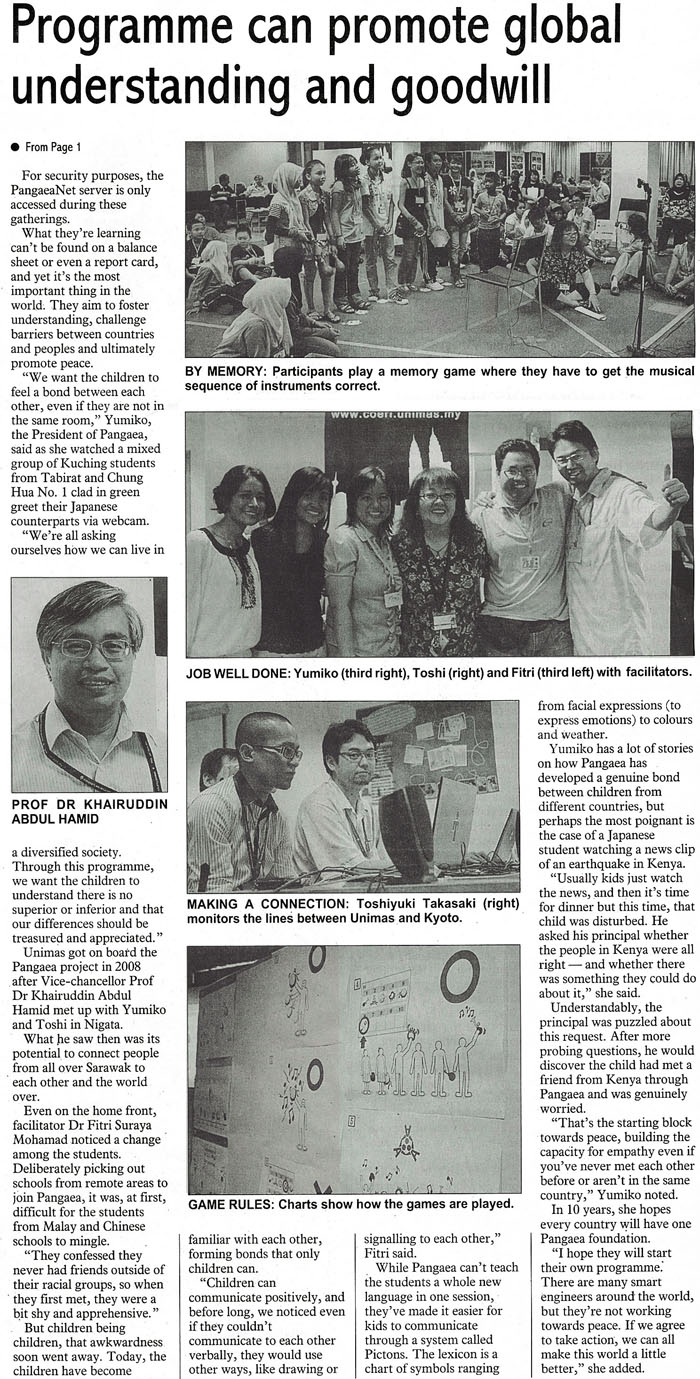



It was a toy project that could have finished Yumiko Mori and Toshiyuki Takasaki. Just days before the toymakers were due to meet Toys R US in New York, their schedule got pushed back. The date they were due to fly in was September 11.
Whether fate or fluke, Yumiko decided against making the last minute change. As the world was struck by images of passenger planes crashing into the Twin Towers the next day, she was overcome. “I could have been dead.”
She was afraid of flying for a long time after that. Shaken by 9/11, her brief trips to the US scared her. Nobody was a friend. Foreigners were feared.
“The idea that people were boxed into categories scared me,” she remembered.
Toy-making became secondary. She was gripped by 9/11…the whys, the hows.
Throughout her travels, she knew there were good and bad people everywhere, saying: “But you can never generalize everybody in one culture or religious group as weird, evil or bad.”
In due course, her questions became ‘how do we make sure this never happens again?”
“Billions of dollars are spent on defence. Why don't we use 0.1 per cent of it on creating peace?” she asked.
After realising this, she and Toshi worked on a totally different project geared to joining children from around the world together in a universal playground.
“Children can communicate regardless of cultural groups,” Yumiko related.
“In 2001, the Internet was developed but the infrastructure was still not being used to the fullest. There was still distance between people. Why? The Internet's supposed to connect the world together.”
Six years have passed. Now Japan, Korea, Vienna, Nairobi and Sarawak (including Bario) can count themselves as key parts of the Pangaea programme.
Created in 2003, Pangaea uses ICT to connect children from around the world together in games, activities and quizzes over a systems platform called PangaeaNet.
Programme can promote global understanding and goodwill
For security purposes, the PangaeaNet server is only accessed during these gatherings.
What they're learning can't be found on a balance sheet or even a report card, and yet it's the most important thing in the world: They aim to foster understanding, challenge barriers between countries and peoples and ultimately promote peace.
“We want the children to feel a bond between each other, even if they are not in the same room,” Yumiko, the President of Pangaea, said as she watched a mixed group of Kuching students from Tabirat and Chung Hua No. 1 clad in green greet their Japanese counterparts via webcam.
“We're all asking ourselves how we can live in a diversified society. Through this programme, we want the children to understand there is no superior or inferior and that our differences should be treasured and appreciated.”
Unimas got on board the Pangaea project in 2008 after Vice-chancellor Prof Dr Khairuddin Abdul Hamid met up with Yumiko and Toshi in Nigata.
What he saw then was its potential to connect people from all over Sarawak to each other and the world over.
Even on the home front, facilitator Dr Fitri Suraya Mohamad noticed a change among the students.
Deliberately picking out schools from remote areas to join Pangaea, it was, at first, difficult for the students from Malay and Chinese schools to mingle.
“They confessed they never had friends outside of their racial groups, so when
they first met, they were a bit shy and apprehensive.”
But children being children, that awkwardness soon went away. Today, the children have become familiar with each other, forming bonds that only children can.
“Children can communicate positively, and before long, we noticed even if they couldn't communicate to each other verbally, they would use other ways, like drawing or signaling to each other,” Fitri said.
While Pangaea can't teach the students a whole new language in one session, they've made it easier for kids to communicate through a system called Pictons. The lexicon is a chart of symbols ranging from facial expressions (to express emotions) to colours and weather.
Yumiko has a lot of stories on how Pangaea has developed a genuine bond between children from different countries, but perhaps the most poignant is the case of a Japanese student watching a news clip of an earthquake in Kenya.
“Usually kids just watch the news, and then it's time for dinner. But this time, that child was disturbed. He asked his principal whether the people in Kenya were all right - and whether there was something they could do about it,” she said.
Understandably, the principal was puzzled about this request. After more probing questions, he would discover the child had met a friend from Kenya through Pangaea and was genuinely worried.
“That's the starting block towards peace, building the capacity for empathy even if you've never met each other before or aren't in the same country,” Yumiko noted.
In 10 years, she hopes every country will have one Pangaea foundation.
“I hope they will start their own programme. There are many smart engineers around the world, but they're not working towards peace. If we agree to take action, we can all make this world a little better,” she added.